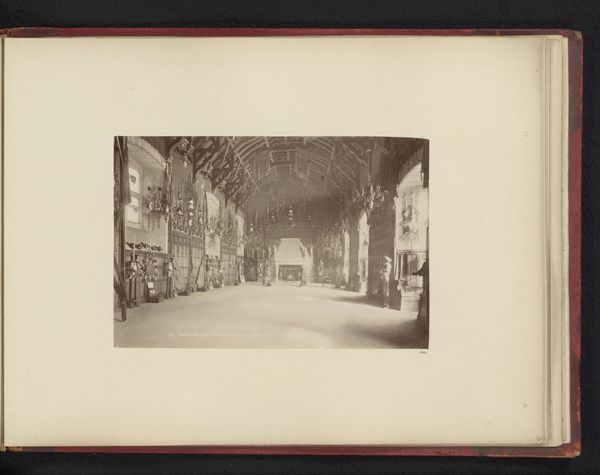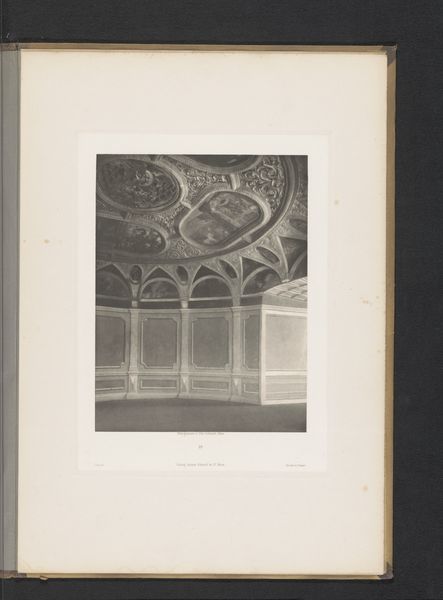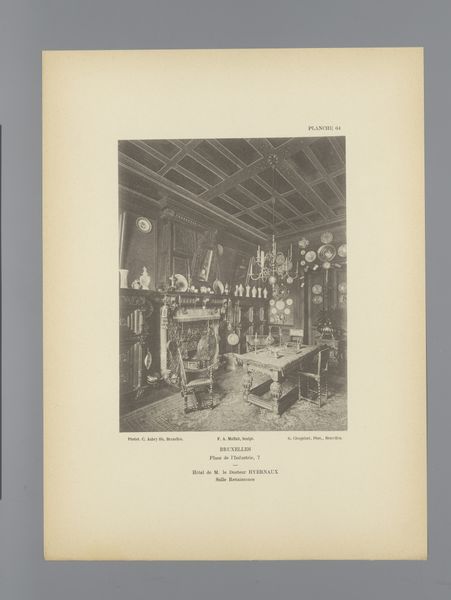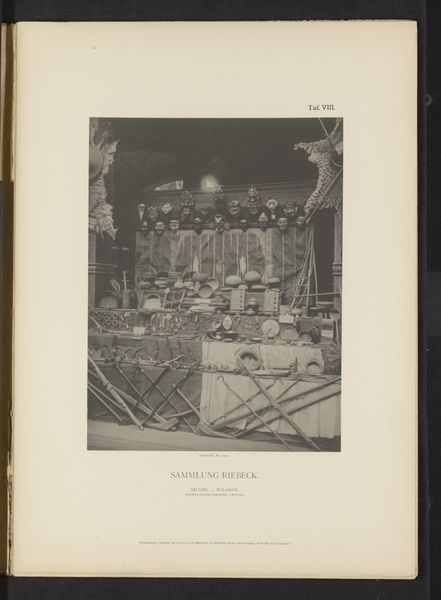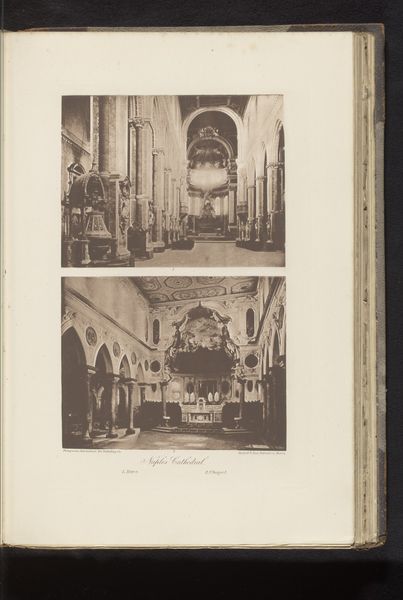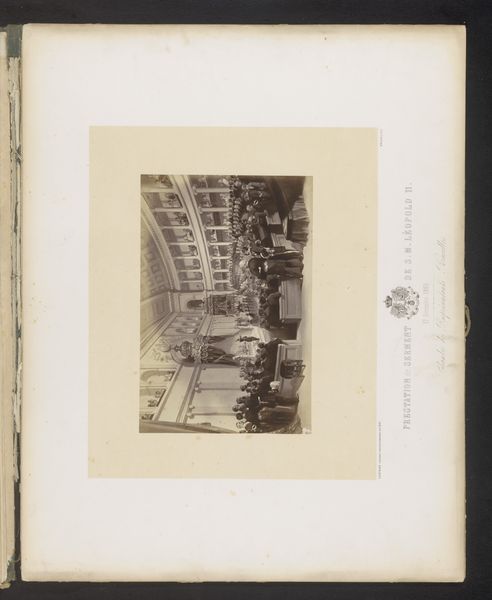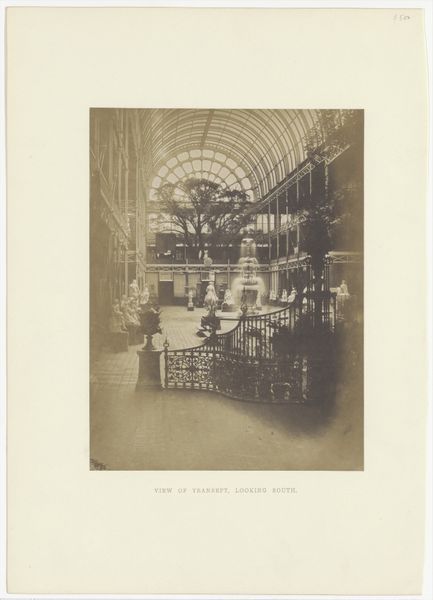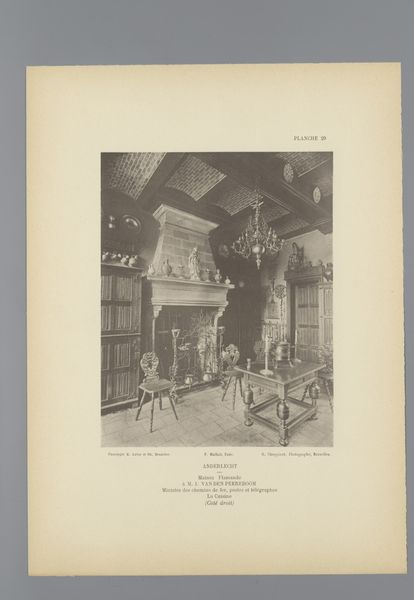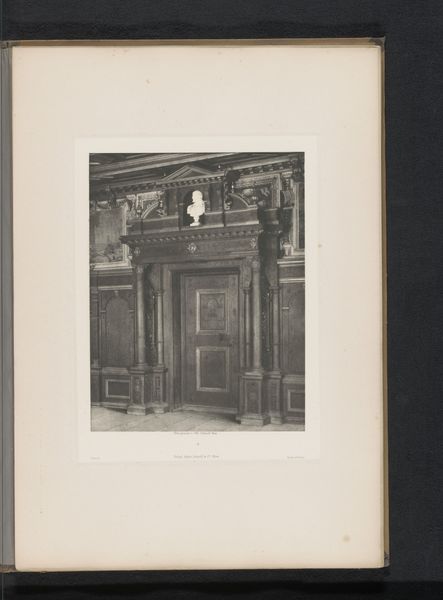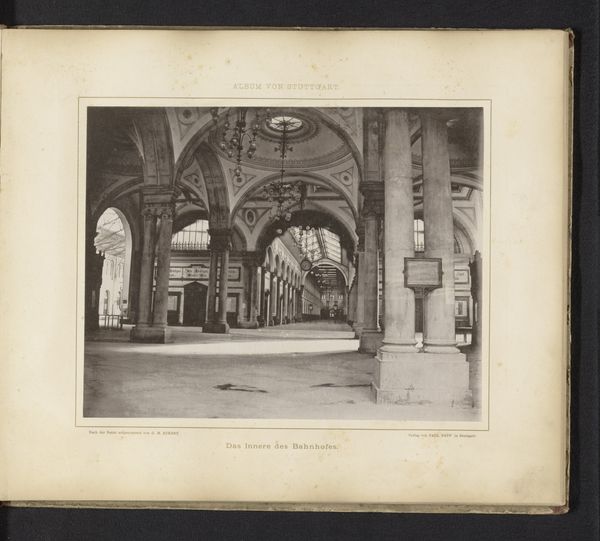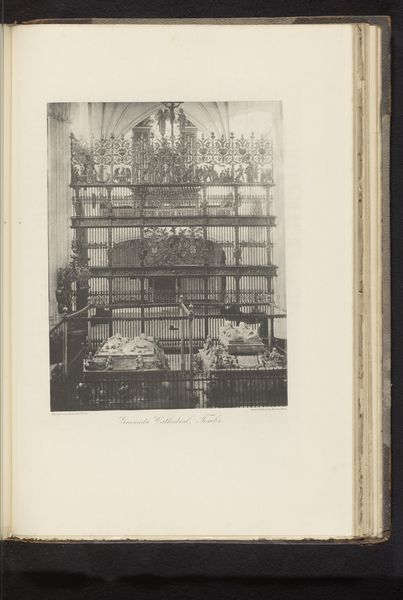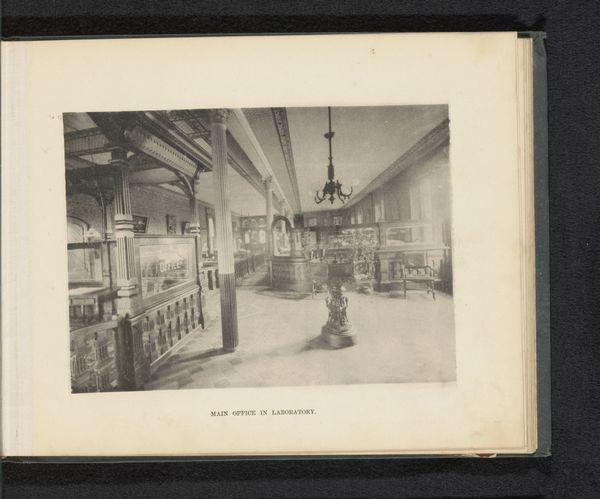
Gezicht op plafondschilderingen en schilderijen in een gebouw in de regio Lungiarü in zuid-Tirol, Italië before 1893
0:00
0:00
drawing, print, ink, engraving
#
drawing
#
medieval
# print
#
landscape
#
paper texture
#
ink
#
engraving
#
watercolor
Dimensions: height 238 mm, width 188 mm
Copyright: Rijks Museum: Open Domain
Curator: Here we have "Gezicht op plafondschilderingen en schilderijen in een gebouw in de regio Lungiarü in zuid-Tirol, Italië" by Otto Schmidt, created before 1893. It appears to be a print, incorporating drawing, ink, and engraving techniques, possibly with watercolor touches. It evokes a very serene, almost hushed atmosphere. Editor: It's dim, yes, almost claustrophobic. The architectural space itself—I sense a deep historical weight. A devotional space, of course, but also a space invested with power, with particular stories being told and particular gazes being enforced through this decorative scheme. Curator: Let's delve into the formal aspects. The perspective Schmidt employs is quite interesting, isn't it? The central vanishing point draws the eye immediately to the altar, organizing the space with a clear hierarchical structure. Note the rendering of the light and shadow; the contrast is skillfully controlled, guiding us through the composition. The texture of the paper and the ink contributes to a certain haptic quality. Editor: Exactly. How does this construction affect women situated historically? Where does the image meet with, say, class differences in the ability to commission and partake of spiritual transcendence through artistic rendering? These images become more compelling once you investigate their capacity to oppress through exclusion, wouldn't you agree? Who had access? Whose stories were ignored? Curator: Those questions are essential. Yet, I'd suggest focusing, for a moment longer, on the composition itself. The careful balance between the architecture and the painted surfaces shows Schmidt's profound understanding of spatial relationships, and that delicate dance can open further insight. Note how the paintings on the ceiling complement the altar below, binding heaven and earth in visual terms. Editor: It binds heaven and earth for a privileged few! And those stories, so deliberately represented, act in concert to naturalize social inequities. This work, I think, is compelling precisely because of how it brings those forces together so concretely within one depicted interior. To engage with this piece effectively, you've really got to ask what ideologies the artist normalizes. Curator: A compelling and urgent challenge indeed, to push further into contextual nuance. Looking again, I think a study of the stylistic contrast between the original medieval design, versus its fin-de-siècle redrawing through Schmidt's lens, could tell us much about changing values then and now. Editor: Absolutely, I am left questioning, in turn, what the artwork does for our present context as well. The image as a symbol becomes enriched through our discussion.
Comments
No comments
Be the first to comment and join the conversation on the ultimate creative platform.
